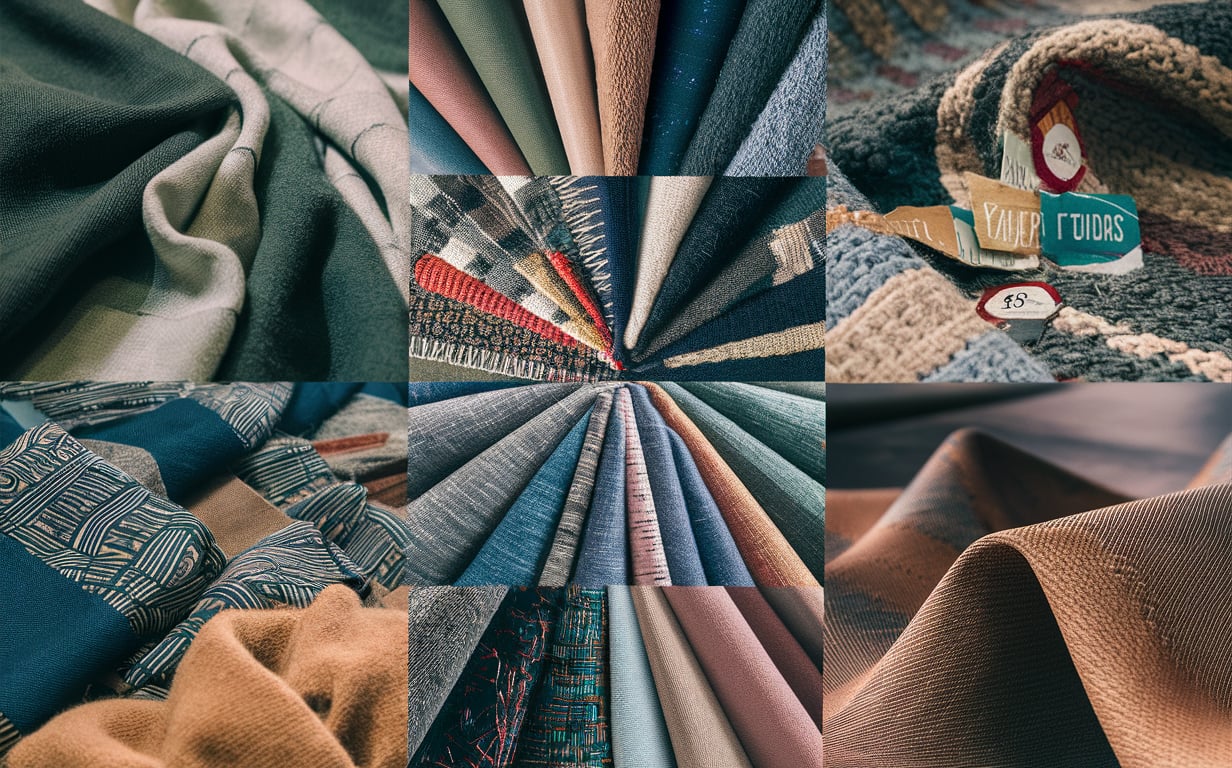Table of Contents
Key Takeaways
- Discover the importance of sustainable fabric sourcing in today’s fashion industry.
- Learn how advanced materials contribute to both sustainability and garment performance.
- Explore the partnership between technological innovation and eco-friendly practices.
- Understand the impact of consumer demand on sustainable fashion trends.
The Importance of Sustainable Sourcing
Sustainable sourcing is a prerequisite for companies that want to minimize their environmental impact and remain viable in the long run. Businesses may drastically lower their carbon footprint by prioritizing ethically generated, renewable, and ecologically friendly resources. This strategy helps the environment and improves a business’ reputation, which attracts customers who are becoming more conscious of sustainability. Furthermore, sustainable sourcing can ultimately result in cost savings by encouraging the effective use of resources and lowering waste.
In the textile industry, sustainable sourcing is particularly vital. Fabric suppliers who commit to sustainable practices ensure that their materials are produced with minimal environmental harm, using methods that conserve water, reduce chemical use, and promote fair labor practices. Companies can guarantee high-quality and ethically produced products by partnering with these suppliers. By aligning with sustainability goals, firms may comply with regulations and meet the increasing demand from consumers for ethical products.
Balancing Performance and Eco-Friendliness
One of the main challenges in sustainable fashion is the perceived trade-off between performance and eco-friendliness. However, advances in fabric technology have demonstrated that it is possible to achieve both. High-performance, sustainable fabrics are now available, offering durability, comfort, and minimal environmental impact. This balance is crucial for consumer satisfaction and brand loyalty as shoppers today are more informed and concerned about the ecological implications of their purchases.
Examples of Advanced Fabrics
The options are vast, from moisture-wicking materials to thermoregulating fabrics. For instance, some companies are producing textiles that are not only high-performing but also derived from recycled plastic bottles. Some are producing fabrics that perform on par with, if not better than, traditional fabrics by combining organic fibers with state-of-the-art manufacturing procedures. Both performance and sustainability can coexist harmoniously within modern textile innovations.
Technological Innovations in Fabric Sourcing
The integration of technology in fabric sourcing has revolutionized the industry. From recycled materials to biodegradable fabrics, innovations are paving the way for a more sustainable future. Advancements like eco-friendly dyes and waterless dyeing techniques are significantly reducing the environmental footprint of textile manufacturing. Automation and artificial intelligence also streamline production procedures, cut waste, and boost productivity.
Bio-Based Materials
Bio-based materials from sustainable resources like bamboo and corn starch are becoming increasingly popular in the textile business. These materials reduce dependency on petrochemicals and offer excellent performance characteristics. For instance, fabrics made from bamboo are naturally soft, breathable, and antibacterial, making them ideal for various applications. Developing such materials represents a step toward a more sustainable textile future, ensuring the industry can meet growing demands without compromising the environment.
The Role of Consumer Demand in Sustainable Fashion
Consumer demand is a significant factor propelling the sustainable fashion revolution. As more individuals become aware of their purchases’ environmental impact, they choose brands prioritizing sustainability. This shift in consumer behavior encourages brands to innovate and invest in sustainable sourcing practices. The rise in eco-conscious consumers is a powerful force pushing the industry towards more responsible production methods.
Influence of Social Media
Social media has amplified the voice of environmentally-conscious consumers. Social media platforms are potent tools for spreading awareness and promoting sustainable brands. Influencers and activists use these platforms to highlight the importance of sustainability, showcase eco-friendly products, and call out brands that fail to meet these standards. This trend pushes more companies to adopt transparent and sustainable practices, knowing that an informed public constantly scrutinizes their actions.
Successful Case Studies in Sustainable Fabric Sourcing
Several fashion brands have integrated sustainable practices into their fabric sourcing strategies, highlighting the feasibility and benefits of adopting eco-friendly methods. Brand A has implemented a closed-loop recycling system, reusing textile waste to create new fabrics, reducing landfill waste, and promoting sustainability. Brand B uses organic and fair-trade-certified materials and has invested in supply chain transparency, supporting sustainable agriculture and ensuring fair wages and safe working conditions.
Future Trends in Sustainable Fabric Sourcing
The future of fabric sourcing lies in continuous innovation and collaboration across the industry. Emerging trends include using bio-based materials, enhanced recycling processes, and applying artificial intelligence in supply chain management. These advancements promise to improve textile sustainability and performance further. As the sector expands, the emphasis will move to developing a more flexible and resilient supply chain that can satisfy the needs of a market that is changing quickly while having the fewest negative environmental consequences.
Enhanced Recycling Processes
Improved recycling technologies make converting old garments into new fabric easier, reducing waste and conserving resources. Mechanical and chemical recycling methods are becoming more efficient, producing higher-quality recycled fibers. This development is anticipated to become industry standard procedure as companies look to lower their carbon impact and depend less on raw resources. Moreover, enhanced recycling processes can help close the loop in the fashion supply chain, promoting a more circular economy.
Also Read: The Economic Benefits of Biodegradability: How It Impacts Businesses and Consumers
AI and Blockchain Integration
Applying artificial intelligence and blockchain technology in supply chain management can increase transparency and efficiency. These technologies can help track the origin and journey of materials, ensuring ethical sourcing and reducing the risk of counterfeit products. AI can optimize inventory management, predict consumer trends, and streamline production processes. Blockchain technology offers a safe, unchangeable ledger for monitoring each stage of the supply chain, from raw materials to final products. Together, these technologies enable more informed decision-making, improve traceability, and build consumer trust by providing verifiable information about the sustainability and authenticity of products.




